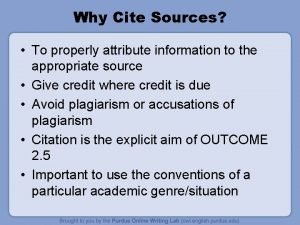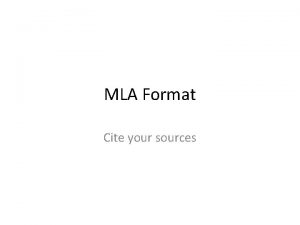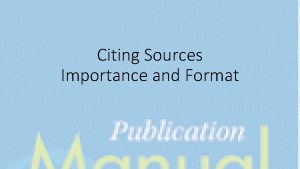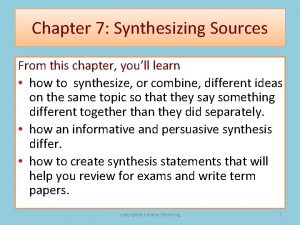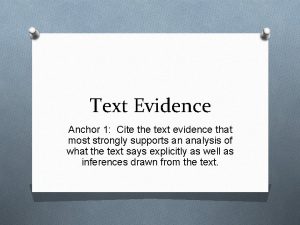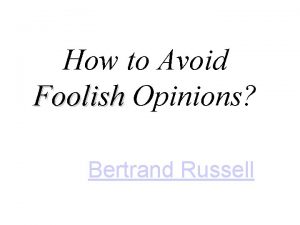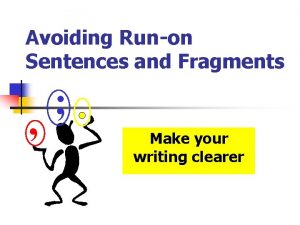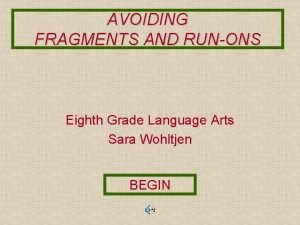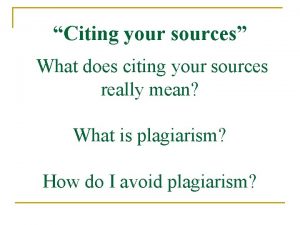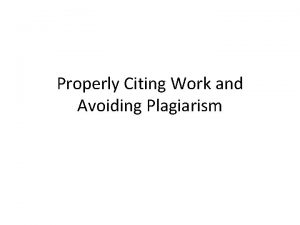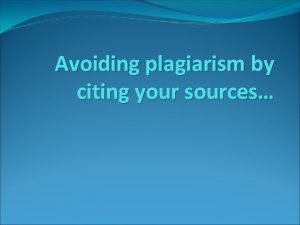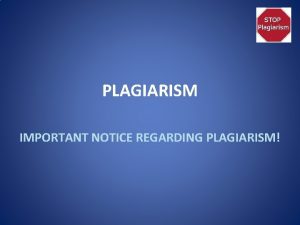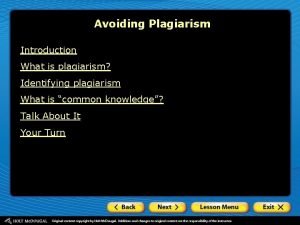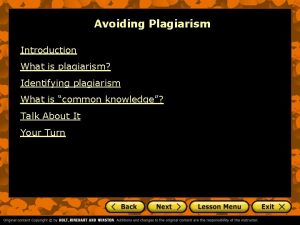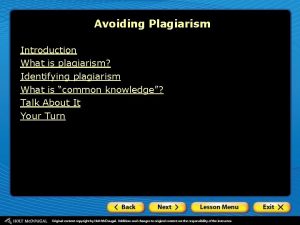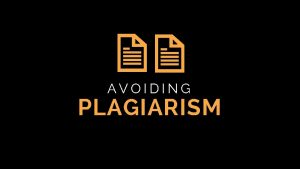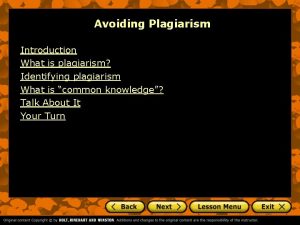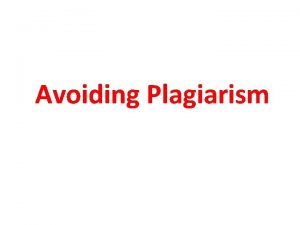Citing Sources The Key to Avoiding Plagiarism Your














- Slides: 14

Citing Sources The Key to Avoiding Plagiarism

Your Friend the OWL

Creating a Works Cited § Use the OWL to LIST your sources correctly § Be sure to have a hanging indent and double spacing:

Once You Have a Works Cited o CITE your sources WITHIN the text

Cite Everything That is Not Yours This includes direct quotes, paraphrases, summaries, and ideas in general Keep the citation as close to the information as possible Example: Smith tells us to “be afraid of history repeating itself” (245). We must be concerned about making the same mistakes as in the past (Smith 245).

If this is your works cited: Smith, John. War and History. New York: Penguin, 2001 Print. Then this goes in the text: (Smith 245). (A book is always author’s last name and page #) If this is your works cited: “Misfits of the Twenty-First Century. ” History. org. International History Institute, n. d. , Web. 21 March 2011. Then this goes in the text: (“Misfits”). (An article title uses a shortened version and page # if there is one)

Where do I start? Start by choosing which type of source it is. Most will be “Electronic Sources. ”

Narrow it down… Select which specific type of electronic source. Or, if the type isn’t listed, use the Basic Style, omitting the elements that aren’t on your source.

If it is listed… Follow the directions listed, referring back to the Basic Style when necessary. Below is the most common source for an article from a web page.

Where’s the info on my source? First, look for an author on the site. If no author, go straight to the article title. This citation has no author, so it starts off as “Historic Area Overview. ”

The website… Use the darkened part of the web address, minus the. org (or. edu, or. com, etc. ). In this case, it would be history.

So far… This is our citation: “Historic Area Overview. ” history. --remember to check back with your example!

Yes, there is a publisher! This is where most citation websites get it wrong—if you can SEE it, it has a publisher! Check the bottom of the page, or see who puts on the website! (For. edu, it is most likely the university, etc. )

Continue… u u Keep looking for the required elements listed on Owl—for this citation, we still need the date published (if it has one listed), the medium of publication (Web. ), and the day we accessed it. Our final citation: “Historic Area Overview. ” history. The Colonial Williamsburg Foundation, n. d. , Web. 23 Feb 2015. u Pay attention to punctuation! Now… what goes in a parenthetical citation for this source?
 Uts apa referencing
Uts apa referencing In text citation
In text citation How to cite sources mla?
How to cite sources mla? Importance of citing sources
Importance of citing sources Synthesizing and citing sources: mastery test
Synthesizing and citing sources: mastery test Cite evidence sentence starters
Cite evidence sentence starters Print and web sources
Print and web sources Importance of water resources
Importance of water resources How to avoid foolish opinion
How to avoid foolish opinion On formalizing fairness in prediction with machine learning
On formalizing fairness in prediction with machine learning Communication styles turtle tiger owl
Communication styles turtle tiger owl Avoiding run on sentences
Avoiding run on sentences Avoiding insider trading training
Avoiding insider trading training Avoiding fragments and run-ons
Avoiding fragments and run-ons Different position in nursing
Different position in nursing

